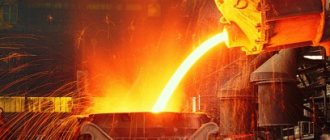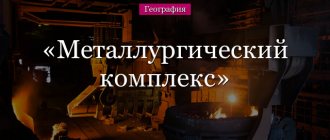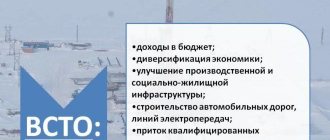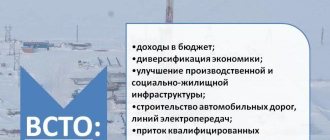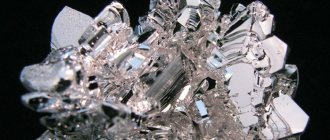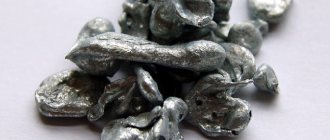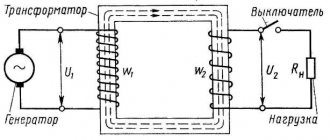Lesson plan:
Ferrous metallurgy
Non-ferrous metallurgy
Today, ferrous metallurgy plays an important role in the heavy industry of the Russian Federation. It is ferrous metals that hold the lead and are the main raw materials for the manufacture of various metal structures and products. This industry is important for the economy of any country, because the extracted raw materials are used to produce cast iron, various types and grades of steel, and rolled metal. This industry includes the beneficiation and extraction of ore materials, the extraction of non-metallic raw materials, and the installation of refractories.
General characteristics and specifics of the industry
If we compare ferrous and non-ferrous metallurgy, the latter is more energy-intensive. It is characterized by complex production processes, since the ore content of the required element is usually low. It also often contains a large number of impurities. For example, copper ore contains a maximum of 5% copper. Pyrites are mined in the Urals. These are multicomponent ores, which contain about 30 chemical elements.
Non-ferrous metals are divided into several groups:
| Category | Peculiarities | Name of metals |
| Heavy | Dense and heavy | Copper, nickel, zinc, plumbum |
| Lungs | Low specific density and weight | Aluminum, lithium, titanium |
| Small | They are companions of heavy metals | Cobalt, antimony, mercury, cadmium |
| Alloying | Used for the production of steel and other alloys | Molybdenum, tungsten, vanadium |
| Noble | Used in microelectronics and for making jewelry | Gold, silver, platinum |
| Rare earth | May have different properties | Tantalum, niobium, yttrium, etc. |
Non-ferrous metal ores contain little extractable element, so to obtain a ton of copper it is necessary to process about 100 tons of rock. Most often, production complexes are located near the raw material base.
Also, processing ore requires a large amount of electricity. Energy costs account for about 50% of all production costs.
Non-ferrous metallurgy is divided into industries based on the type of element being mined. The largest production volumes come from the following metals:
- Copper.
- Aluminum.
- Cobalt and nickel.
- Tin.
- Lead and zinc.
- Gold.
Nickel production is associated with nickel ore mining sites. The main deposits are located in the Norilsk region of Siberia and on the Kola Peninsula. Most branches of metallurgy are characterized by multi-stage production stages. During waste disposal, other materials are obtained. They are then used in the mechanical engineering, construction and chemical industries.
general characteristics
Non-ferrous metals are widely in demand in industry, but they are most important in construction, mechanical engineering and the chemical industry.
In the process of producing non-ferrous metals, 3 main stages :
- extraction of natural raw materials and their subsequent enrichment;
- processing of non-ferrous ore - obtaining an intermediate product;
- production of pure metal.
Rice.
1. Non-ferrous ores. The development of non-ferrous metallurgy is closely related to scientific and technological progress, thanks to which the scope of application of non-ferrous metals and their alloys has significantly expanded. If at the beginning of the twentieth century no more than 15 metals were in demand in industry, today the industry actively uses about 70 types of various non-ferrous metals.
Non-ferrous metallurgy has a number of features that affect its placement
. These include:
- High energy intensity of production. The development of the industry will only be effective when production is located close to sources of inexpensive energy resources.
- High material consumption. Since non-ferrous metals are contained in ores in small quantities, it is advisable to build production facilities for their enrichment and processing directly near the sites where natural raw materials are extracted.
- The raw materials used are complex. This means that the vast majority of non-ferrous metal ores contain several metals. To make the most of them, the most effective way is to combine them.
- Non-ferrous metallurgy is widely used in the production of secondary raw materials - scrap metal.
Rice. 2. Production of scrap metal.
History of development
Humanity has been smelting metals for many centuries. This is confirmed by multiple archaeological finds. To a greater extent in Russia, the development of mining and the production of non-ferrous metals is associated with the name of Peter I. It was thanks to his orders that the first smelters were built in the Urals.
By the beginning of the 20th century, Russia had become one of the world leaders in the metal production industry, but the First World War stopped the development of the industry for a long time. Although already in the 30s, when the first five-year plans appeared, the state recovered and was able to strengthen its industrial power. After the Great Patriotic War, the construction of the largest metallurgical plants began. Most of them are still working.
Geography of non-ferrous metallurgy
The geography of the industry is very large. The richest deposits are located in Australia, Peru, Venezuela, India, Chile, South Africa and Guinea. To increase production efficiency, most states cooperate with each other.
The leading place in the world non-ferrous metallurgy is occupied by the development of deposits of aluminum-containing ores. Most of the reserves of this metal are located in the equatorial zone. But successful aluminum production can only be established in those countries that have sources of relatively cheap energy:
- Russia, Norway, the USA and Canada have powerful hydroelectric power plants and large hydrological resources.
- Iraq, the UAE, the Netherlands and the UK have natural gas reserves.
- China, Australia and India have a lot of coal.
In France, Hungary and Austria, energy is expensive, so aluminum production is gradually decreasing in these countries.
The geography of the industry is also influenced by environmental factors, since the production of metals greatly harms the environment. It pollutes surface and underground waters, the atmosphere and soil. For example, during production, sulfur dioxide is released, which then falls in huge quantities in the form of acid rain on the surface of the Earth. In this case, all living things suffer.
Ural metallurgy
In the mid-90s. it accounted for most of the domestic production of manganese and chromite ores, about 1/5 of iron ores, about half of cast iron, steel, finished rolled products and steel pipes produced in the country, as well as most of the ferroalloys smelted in Russia. The qualitative profile of Ural metallurgy depends on the specifics of local raw materials. The Urals are the only place in the country where particularly high-quality metal is obtained (naturally alloyed, from charcoal cast iron, etc.).
The Ural metallurgy (2/5 of rolled steel production) partly uses its own iron ore, partly ore from the KMA and Kazakhstan, and completely imported technological and energy fuel (Kuznetsk and Karaganda coal and West Siberian gas). The local resource base is being strengthened by the development of new ore deposits. The overwhelming majority of the metal is produced by Magnitogorsk, Novo-Tagil, and other giant plants (Ural-Kuznetsk complex).
Production of main types of metallurgical products in the Urals (thousand tons)
| Product type | 1995 | 1996 | 1997 | 1998 | 1999 | 2000 |
| Cast iron | 16529 | 15285,6 | 15725 | 14291,3 | 16980,2 | 14539,3 |
| Steel | 21338,6 | 20405,6 | 20452 | 18419,5 | 21645 | 19347,9 |
| Ready rental | 16148,1 | 16076 | 16182,6 | 14470,8 | 16607,6 | 14931,0 |
| Steel pipes | 2075,1 | 1968,2 | 1969,9 | 1479,7 | 1598,5 | 1730,8 |
| Coke 6% moisture | 10842,2 | 10351,3 | 10431,9 | 8978,2 | 10884 | 9169,6 |
| Iron ore | 15544,7 | 14526,7 | 12377,7 | 10667 | 12847,6 | 9612,6 |
Important advantages of the Ural base include:
high territorial concentration of fixed production assets;
presence of the highest contingent of highly qualified metallurgists in the country;
a wide network of secondary and higher educational institutions;
a large number of design and research organizations of the metallurgical profile;
presence of a local large consumer in the form of a metal-intensive
mechanical engineering;
abundance of scrap metal in the area, which is a good help in replenishing the raw material base.
The main disadvantages include:
the narrowness of the local fuel and energy base and, first of all, the lack of our own coking coals;
tense water balance;
outdated industry equipment.
According to available forecasts, in the future the Ural base will remain the main base of Russian ferrous metallurgy with a primary specialization in the production of mass grades of metal, ferroalloys and pipes for main gas pipelines.
Main sub-sectors
The non-ferrous metallurgy includes several sub-sectors. The main one is the production of aluminum. It accounts for almost half of the world's smelting of non-ferrous metals. Bauxite is used as a raw material, from which alumina is obtained during processing. The main deposits are in China, Russia, Australia and Brazil.
Copper production accounts for approximately 25% of the market volume. For this purpose, enriched copper ore is used. Recycling of secondary raw materials is also important. The main deposits of copper ores are located in Central Africa, Chile, Russia, China, Canada and the USA.
Lead and zinc are produced from polymetallic ores. The largest volumes are mined in Mexico, the USA, Australia, China and Canada. These ores are processed in Australia, the USA, Japan, China and several EU countries.
The largest nickel deposits are located in Russia. It also acts as the world's main producer. The production of this metal accounts for 6% of the total world smelting volume. The raw material is nickel ore.
Tin is obtained by processing tin ores. The world's main deposits are located in Southeast Asia and Bolivia. Among the main smelting centers are Malaysia, China, Bolivia and Russia. The rest of the industry's products are manufactured on a much smaller scale. Most often these are local productions.
The production processes for various metals are similar, but depending on the specific natural resource they have certain differences, so the cycle can best be described using the example of aluminum production. It includes the following stages:
- Bauxite mining.
- Concentration by screening or washing. This is how the concentration of aluminum in the ore increases.
- Alumina production.
- Metal smelting.
- Production of aluminum ingots.
In Russia, this industry is one of the most developed. This is due to the presence of a large amount of raw materials, as well as a developed production base, which remained after the collapse of the USSR.
Geography of the world's ferrous metallurgy, its raw material base. Development problems.
Ferrous metallurgy includes the extraction and preparation (beneficiation, etc.) of raw materials, production of cast iron, steel, rolled products and ferroalloys. (Ferroalloys are alloys of iron with so-called alloying metals (manganese, chromium, etc.), used in steel smelting as special additives to improve the quality of the metal.)
Depending on the completeness of the main cycle (smelting cast iron, steel and rolled products), ferrous metallurgy is divided into metallurgical plants (including all three stages), conversion enterprises (without smelting cast iron) and small-scale (shop) metallurgy. Particularly distinguished are enterprises with electrothermal production of steel and ferroalloys.
The raw materials for ferrous metallurgy are iron, manganese and chrome ores.
In general, approximately 1 billion tons of iron ore are mined annually in the world, of which more than half of global production comes from three countries - China (23%), Brazil (17%) and Australia (13%). Iron ore production in these countries is growing rapidly. Iron ore is also mined in large quantities in Russia, Ukraine, the USA, India, Canada, Venezuela, France, Kazakhstan, etc. Its largest exporters are Brazil and Australia, providing about 60% of world exports. Many countries of the world, including those producing iron ore - the USA, Great Britain, Italy, China, etc., import it. The largest importers are Japan, Germany, and the Republic of Korea. Combines, despite certain structural changes that have occurred in the industry, remain the main type of iron and steel enterprises in most developed countries. Full cycle ferrous metallurgy is characterized by high material intensity of production, i.e. high consumption of materials used in relation to the weight of the finished product.
The consumption of iron ore is especially high, and coking coal is somewhat less. To smelt 1 ton of cast iron, at least 1.5-2 tons of iron ore are consumed (the richer the ore is in iron, the lower its consumption), 1-1.2 tons of coking coal, and a total of 4-5 tons of raw materials and fuel. In this regard, countries and regions rich in iron and manganese ores and fuel have always been considered ideal places for the development of ferrous metallurgy - geoglobus.ru. For example, India, China, Kazakhstan, Australia, and the Donetsk-Dnieper region of Ukraine are distinguished by a combination of resources of iron and manganese ores and coking coal. But such a favorable combination of natural resources for ferrous metallurgy is rare, so many metallurgical regions and centers arose either near the development of iron ore (for example, in Lorraine in France, in the deposits of the Great Lakes in the USA, in the Alps of Italy, in Sweden, Brazil), or in places of coal mining (for example, the Ruhr region in Germany, Pennsylvania in the USA, Donbass in Ukraine, Kuzbass in Russia, etc.).
An additional and very large raw material base for ferrous metallurgy consists of scrap metal resources (depreciation scrap, metallurgical waste, etc.). The processing of metal scrap is associated with an excess of steel smelting over cast iron; it is more profitable (cheaper) to immediately smelt steel from scrap, bypassing the blast furnace (iron foundry) production.
The leaders in global steel production (approximately 700-750 million tons) are China, Japan, the USA, Russia, Germany, the Republic of Korea, Brazil, England, France, and Italy. Steel production is a branch of specialization of the economy of a number of other countries - Australia, Canada, South Africa, Sweden, Austria, Spain, Ukraine, Poland, and the Benelux countries.
In global steel production, the share of developing countries is constantly increasing (about 40% of steel is produced), especially the newly industrialized countries (Republic of Korea, Brazil, India, Mexico, Argentina, etc.).
Steel production in the CIS member countries, in particular in Russia, has sharply declined in recent years. However, Russia is the largest supplier of ferrous metals to the world market (about 15% of world exports). The United States imports ferrous metals the most.
Geography of non-ferrous metallurgy of the world: raw material base, diversity of industry structure, development problems.
Non-ferrous metallurgy includes the production of non-ferrous, noble, rare metals and their alloys. In terms of production volume, the smelting of aluminum (more than 45% of the annual smelting of non-ferrous metals in the world), copper (25%), zinc (16%) and lead (11%) stands out. The production of nickel, tin, magnesium, cobalt, tungsten, and molybdenum is significant.
Non-ferrous metallurgy is distinguished by some features that affect its placement.
1. High material intensity of production, which makes it unprofitable to separate processing from the sites of extraction of raw materials. The percentage of most non-ferrous metals in ores is small (usually from a fraction of a percent to several percent), which predetermines the “linking” of ore processing enterprises to the places of extraction of raw materials.
2. High energy intensity of production, which makes the development of the industry effective based on sources of cheap fuel and electricity. Since the production (smelting - geoglobus.ru) of metals from enriched raw materials requires large amounts of energy, the stages of enrichment and metallurgical processing in non-ferrous metallurgy are often geographically separated.
3. The complex nature of the raw materials used. Many non-ferrous metal ores are polymetallic in nature, i.e. contain several metals. In order to completely extract (use) them in non-ferrous metallurgy, production combination is effective.
4. Widespread use of secondary raw materials in the production of resources (in developed countries, 25-30% of copper and aluminum, up to 40-50% of lead are smelted from scrap). For this reason, the location of non-ferrous metallurgy industries in many cases is focused on secondary raw materials (scrap metal).
Different branches of metallurgy have their own placement characteristics.
The leading branch of non-ferrous metallurgy (in terms of production volume and use of products) in the modern world economy is the aluminum industry. Among other branches of non-ferrous metallurgy, this industry is characterized by the greatest complexity of production. The first stage of aluminum production - the extraction of raw materials (bauxite, nepheline, alunite) - is focused on rich deposits. The second stage - the production of aluminum oxide (alumina), - being material- and heat-intensive, tends, as a rule, to sources of raw materials and fuel. And finally, the third stage - electrolysis of aluminum oxide - focuses on sources of cheap electricity (large hydroelectric and thermal power plants).
The main raw material for the production of alumina is bauxite, the world production of which is approximately 150 million tons per year. The vast majority of bauxite production and exports occur in Australia (almost a third of world production), Guinea, Jamaica, Brazil, China, India, Russia, Suriname, Greece, Venezuela, Kazakhstan. Most of the raw materials (approximately 2/3) are processed into alumina locally - in Australia, Brazil, Russia, Kazakhstan, etc. Part of the raw materials (approximately 1/3) is exported to countries where the main factor for the production of aluminum oxide is the availability of mineral fuel (local or supplied from outside) - USA, Canada, Ukraine , Ireland, Sardinia (Italy), etc.
The production of aluminum metal has been predominantly developed in countries with large sources of cheap energy - large hydro resources and powerful hydroelectric power plants (USA, Russia, Canada, Brazil, Norway, etc.), rich in natural gas (Iraq, Bahrain, UAE, the Netherlands, UK, etc. .) or coal (Australia, India, China, etc.). In some old, traditional centers of aluminum smelting (France, Austria, Hungary, etc.), where energy is expensive, its production has been greatly reduced and is gradually disappearing.
The largest aluminum producers in the world are Russia, USA, Japan, Germany, Italy.
The copper industry in its location is mainly focused on copper resources (natural and secondary raw materials). The low metal content in copper concentrates (from 8 to 35%) and the relatively low energy intensity of their processing (compared to aluminum smelting) make it profitable to locate copper production (smelting) in places where copper ores are mined and enriched. Therefore, copper mining and smelting sites are often geographically combined - geoglobus.ru. The main copper mining areas are in North and Latin America (Chile, USA, Canada, Peru, Mexico), Africa (Zambia, Zaire), CIS (Russia, Kazakhstan), Asia (Japan, Indonesia, Philippines), Australia and Oceania (Australia , Papua New Guinea).
The main copper-mining countries also stand out in terms of copper smelting; the leading place belongs to the USA, Chile, Japan, China, Canada, and Russia. Part of the mined ore in the form of concentrates and blister copper is exported to other countries (from Papua and the Philippines to Japan, from Latin American countries to the USA, from African countries to Europe, from Russia and Kazakhstan to Europe and China). Almost 1/5 of the world's copper smelting is based on scrap metal resources. The copper smelting industry of Great Britain, France, Germany, Belgium and other countries produces only secondary metal.
The zinc and lead industries usually have a common raw material base - polymetallic ores. Countries with the largest deposits of polymetals (USA, Canada, Mexico, Peru in North and Latin America, Ireland and Germany in Europe, Russia and Kazakhstan in the CIS, China, Japan, Australia) are also distinguished by their production. In terms of the volume of lead and zinc smelting, the leading positions in the world are occupied by economically developed countries of the world - the USA, Japan, Canada, Australia, Germany, France, Italy. China is a very large producer of lead and zinc. Russia is not among the top ten leading countries in global zinc and lead production.
The modern geography of the industry is characterized by territorial disunity of places of extraction and enrichment of lead and zinc ores and their metallurgical processing. For example, Ireland, which mines zinc and lead ores, does not have the capacity to smelt them, while in Japan, Germany, and France, the amount of metal smelting significantly exceeds the amount of zinc and lead production in these countries. Along with the influence of other factors, this is explained by the possibility of using long-distance raw materials, since the transportability of zinc and lead concentrates due to their high metal content (from 30 to 70%) is exceptionally high.
Location of the tin industry. The majority (about 2/3) of tin mining and smelting comes from the countries of Southeast Asia and, above all, Malaysia. Bolivia, Russia, and China also have large-scale tin mining and smelting.
In the world production of zinc, lead and tin, as well as in the copper industry, the share of secondary raw materials (scrap metal) is large. This is especially typical for the non-ferrous metallurgy of developed countries, where secondary raw materials provide 50% of the smelting of lead, 25% of zinc and tin.
Problems and development prospects
For Russia, a big difficulty in the non-ferrous metallurgy industries is the dependence on sources of thermal energy and electricity. For example, almost 80% of the electricity generated by the Bratsk Hydroelectric Power Plant is spent on servicing an aluminum smelter. Because of this, production becomes much more expensive, which in some cases leads to its unprofitability. The way out of the situation is the development and implementation of new energy-intensive technologies.
The production of aluminum, nickel and copper is affected by a huge territorial gap. This applies not only to ore mining and the first stage of its processing, but also to other stages of production, which is why the use of recycled materials began to increase in importance in the 1970s.
Also, almost all types of enterprises in this industry greatly harm the environment. Manufacturing of products leads to significant environmental pollution. Multi-billion dollar investments are needed to modernize production and introduce new technologies. This is the only way to reduce the burden on the environment.
Environmental factor
At the current stage of development of the national economy, the environmental situation in many regions of Russia has sharply worsened, which cannot but be taken into account in the process of locating metallurgical enterprises, which have a strong impact on the environment and natural resource management, being major polluters of the atmosphere, water bodies, forests, and lands. Given current production volumes, this impact is quite noticeable. It is known that the higher the level of environmental pollution, the greater the cost of preventing pollution. A further increase in these costs can ultimately lead to unprofitability of any production.
Ferrous metallurgy enterprises account for 20-25% of dust emissions, 25-30% of carbon monoxide, and more than half of sulfur oxides of their total volume in the country. These emissions contain hydrogen sulfide, fluorides, hydrocarbons, compounds of manganese, vanadium, chromium, etc. (more than 60 ingredients). Ferrous metallurgy enterprises, in addition, take up to 20-25% of the total water consumption in industry and heavily pollute surface waters.
Taking into account the environmental factor when locating metallurgical production is an objective necessity in the development of society. In the foreseeable future, significant changes should occur in the technical condition of the metallurgical complex and in environmental management processes, which will significantly solve many environmental problems. Only in non-ferrous metallurgy, for example, by the year 2000 the amount of harmful polluting emissions is expected to decrease by 12-15% and the vast majority of enterprises will achieve maximum permissible emission standards. An increase in the use of mining systems with backfilling of mined-out space in raw material mining areas by 20%, as envisaged by the program, will, along with improving technical and economic indicators during ore mining, ensure the preservation of the earth's surface in the mining allotment, and significantly reduce the consumption of materials for fastening, including very expensive ones metals
Huge reserves and opportunities for solving environmental problems lie in the complexity of processing raw materials, in the full use of useful components in its composition and in deposits
In the process of justifying the location of metallurgical enterprises, it is necessary to take into account the whole range of factors that contribute to the organization of more efficient production in a particular territory, i.e. their combined interaction on production processes and the life of the population in the regions.
There are three metallurgical bases on the territory of Russia - Central, Ural and Siberian. These metallurgical bases have significant differences in raw materials and fuel resources, the structure and specialization of production, its capacity and organization, the nature of intra- and inter-industry as well as territorial connections, the level of formation and development, the role in the all-Russian territorial division of labor, in economic relations with near and far abroad. These bases differ in the scale of production, technical and economic indicators of metal production and a number of other characteristics.
